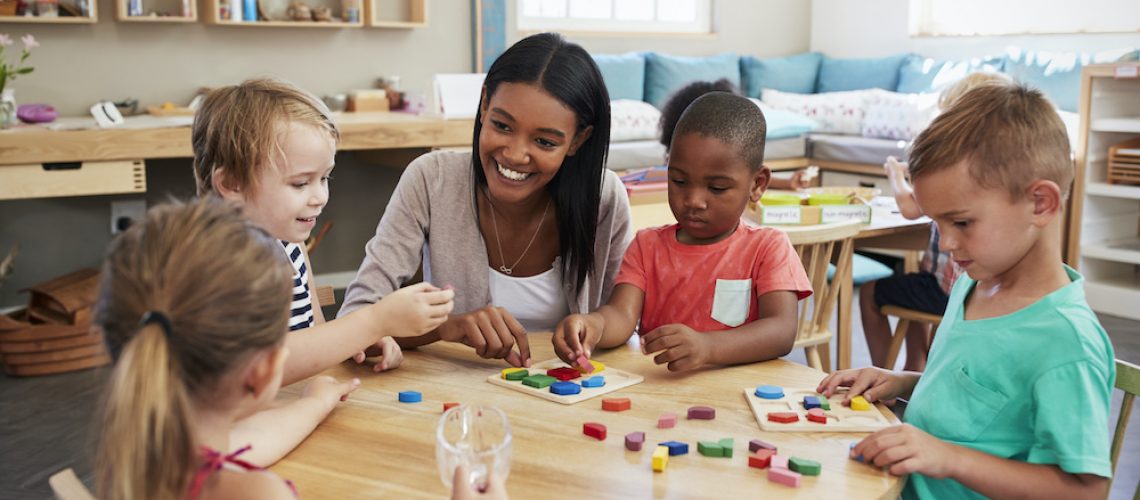What is Montessori?
Ever heard of a Montessori school? The Montessori method? Like many you may not know exactly what this means and how it differs from a more traditional school. The Montessori method of education originated with and is named after Dr. Maria Montessori, the first woman in Italy to obtain the degree of Doctor of Medicine. “Education must begin at birth,” said Dr. Montessori.
The Montessori approach emphasizes independence and respect for a child’s natural, psychological, physical, and social development. It is based on the belief that all children are unique individuals, that they all have immense potential, that they want to learn and be busy. In order to fit the teaching practices to the child, the teacher must guide each student as they take on the learning process.
Features of Montessori Education
Although each Montessori school is unique, you’ll find certain consistent features. These basic features guide students and teachers throughout the program.
Prepared environment
Montessori classrooms are referred to as a “prepared environment.” The classrooms are designed with everything the children need to explore and learn independently. Every book is within reach of the child. Materials are carefully placed in the room to entice a child to come work with them. A child can choose for themselves what they want to do and what they are comfortable committing to.
Experience based learning
Montessori schools provide students with materials designed to inspire learning. For example, rather than memorizing math facts, they begin by counting and adding concrete materials. They use little objects and a set of wooden letters known as the movable alphabet to learn to read and write. “The child needs to manipulate objects and to gain experience by touching and handling,” observed Maria Montessori.
Learning from peers
Montessori classrooms include mixed ages and skill levels. Generally they are divided into three year groups, such as 3 to 6-year-olds or 6 to 9-year-olds. The methodologies used are threefold: imitation models, peer tutoring, and collaboration. Young children watch older children work and learn from this experience by asking questions. Older children gain knowledge and social skills by explaining their actions to younger children.
Uninterrupted work periods
Montessori education emphasizes uninterrupted work periods, which are generally 2-3 hours long. Traditional schools may spend half hour periods on each subject. Instead, in Montessori schools, children spend the whole period focusing on each subject. The goal is to get the students to engage with and understand the concepts being taught in order to develop concentration.
Free Choice
Children are more willing to embrace learning when they can control it. Programs like Montessori schools give children control to make more decisions than their public school peers. Although there are some limits, children can choose what to work on, how long to work on it, whom to partner with, and so on.
Academics
In addition to math, language, and science, Montessori schools focus on two other academic areas:
- Practical life – It consists of exercises to help children learn skills used in everyday life such as budgeting and starting a small business.
- Sensorial – is the education of the senses, and is most prevalent in classrooms for young children. It is designed to help the sense of smell, hearing etc.
Individualized curriculum
Children need attention and specific instructions to help them learn. Montessori-trained teachers make sure to tailor instructions and lessons to each individual depending on their needs. In a class of 25 different students, each student is at a different level that the teacher observes and tracks.
Role of teacher
A Montessori teacher is sometimes referred to as a guide, rather than a teacher, and this reflects her/his non-traditional role. A Montessori teacher’s job is to observe the children and introduce them to the academic materials at just the right time. Maria Montessori saw the role of the teacher as providing children with tools for learning, rather than pouring knowledge and facts into them.
Pros and Cons of Montessori Education
Every system of education has its own benefits and shortcomings and so does Montessori.
Pros- Some of the benefits are:
- There is greater emphasis on hands-on independent learning.
- There is enhanced social interaction among kids.
- This system aims to cultivate love for learning.
- This method of education is inclusive of the special needs of every child.
Cons- Some of the limitations are:
- Montessori education is not easily accessible to everyone.
- Most Montessori programs are private and can be expensive. Generally people from low income groups cannot attend these schools.
- Sometimes it is better to have more structure and Montessori curriculum may be too loose for some people.
- The open-ended structure of the classroom can be intimidating for some kids.
- It can be difficult to teach Math using this method.
With all this information, you can decide if Montessori education will be beneficial to your child. You can even adopt some features of the Montessori model and implement them in your homeschool curriculum.

